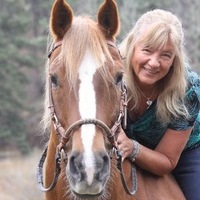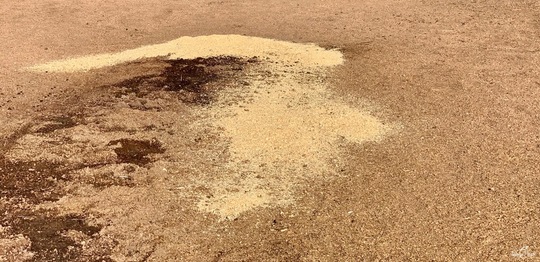
The Most Popular Horse Breeds Of 2019
Equestrian Advice & Guides General Equestrian
Build your business profile for FREE and expose your services to thousands of potential clients!
Create my profile now!
Ever wish you could potty train your horse to urinate only in a certain area that you designate, instead of where he chooses? If you could teach him to “go” only in that place and not in his stall or under the eaves of his barn, in his water bucket, right in front of the gate or on his hay… That would just be the bomb, wouldn’t it? But can it be done? Can you potty train a horse?
The short answer is yes. Yes, you can, but you must be vigilant, patient and have a keen understanding as to what you want, what he wants and the vast difference between the two desires.
We’ll start with your horse: He wants to live the most leisurely and non-stressful existence he can, and yes, this includes where to pee and poop.
Now for you: You also want to live the most leisurely and non-stressful existence you can, and this includes where your horse pees and poops.
The issue comes in when you realize your non-stress longings and his are in direct conflict with each other. For him, close, handy, habitual and easy are paramount to his happiness, but the one thing he (or she) really wants is No Splashing of urine on the legs! This last item is the thing that drives most horses to choose where they prefer to saturate the ground. If they have a soft area of shavings, that’s usually where they will choose to go. Soft is relative and some horses don’t care about the softness of their toilet, but most do. So we’ll go with the idea that horses prefer mushy, spongy fluffy ground over hard, flat surfaces. This works to your advantage!
You can add stall mats to the areas you don’t want the bathroom to be located and it may solve the problem right here and now, especially if you add a pile of shavings in the area you do want him to use and prime the area with some soiled shavings or dirt. Remember to place the new pile on a slight slope and into a slight one-inch depression in the dirt paddock and near enough to where he eats that he doesn’t need to walk far to use it. If you are in a wind-prone area, try wood pellets, wet them and then cover with a light layer of wet straw or used shavings.
Leave the fresh shavings piled up at least six inches so that it’s deep enough that he is convinced no urine will hit it and splash him. Slicing the shavings bag open and dumping it can work if the area you choose is not right next to a fence because the horse will recognize the pile as being one or all of three things; a nice bed, a great pawing toy, or a bathroom. You don’t want him getting cast if he decides the bedding is actually a bed to lie down in first, and rolls in joyful exuberance over his new-found furniture only to be stuck against a fence or wall that he can’t get away from.
To really encourage his acceptance of this new pee spot, take some of his soiled shavings or soiled hay or dirt and add to the pile of fresh clean shavings you now want him to use. If you add mats and shavings, your loo-location problem should resolve within a week. If your horse lives in a paddock and open stall situation, you’ll want to shut the door or block off any unwanted pee areas until his new hygiene habits are formed and locked in place.
If you don’t want to use shavings or wood pellet, sand or pea gravel (no pun intended, honest!) are great attractants as well. Just do the same as you would with shavings and remember to add hard surfaces where you don’t want them to go, like doorways, in front of gates, inside the stall, under any overhangs or eaves, where they are fed.
Hay is a fine absorber of urine splashing, so it’s wise to feed them on hard surfaces, like on mats, if you ground feed, and use hay nets hung low if you prefer to keep their food off the gravel, sand or dirt. The feeders that horses must stand and eat from at chest level generally are not the best idea, but we will skip over that whole conversation and hit it in another post. Suffice it to say, they’ll pull the hay out and drop it on the ground to eat it anyway, and then they will smash the fines and stems into the dirt and promptly pee and poop on it since they’ve created the perfect scenario of eating near their feed spot and soft ground. Besides that, you are setting them up for sinus issues, but like I said, we’ll touch on that in another post. Suffice it to say that it’s best to feed near, but not on top of their bathroom.
When you first begin training the horse to pee where you want him to, remove his access to that area. Clean out his old cherished and disgusting pee spot, and scrape it down to fresh dirt. Apply lime or a stall-fresh granulated or dust product and allow to thoroughly and completely dry. Do not use cat litter, it doesn’t work. Fill with gravel, cover with fresh dirt and lay a new hard rubber stall mat over the top. Sprinkling blood meal over the mat will further deter his interest in being anywhere near that area and helps immensely when training.
Once the new bathroom is in place and horses are using as directed, remember to keep it soft, squishy, mushy and clean. Remove the old putridly disgusting matter and dispose of as if it were toxic waste. Meaning, do not leave it where you don’t want your horse to pee in the future. Scrape down to dirt, cover in lime or baking soda and allow too dry. Refresh the pea gravel, sand or shavings and add a pinch of the tiny stuff from the old piddle puddle and call it good.
Training them to poop where you want is a whole other can of worms, and to be honest, a much more difficult one to pull off successfully so we won’t go into that here. Besides, the title, right? “To Pee or Not to Pee.” Nothing about pooping listed. The best advice on how to train them to poop where you want is to soil a particular spot with their own manure and leave it for a couple of days. You can add manure to the pee spot, too, but they usually keep the two areas separate.
Drop me a note on my website and let me know how this worked for you, and if you know how to “house-train for popping,” please let me know!
To get your FREE TRAIL RIDING TIPS e-booklet (released on Sept 20, 2019) go here: https://lp.constantcontact.com/su/Qa0qA96/HorseClicks
Happy Trails!
~Tanya Buck

